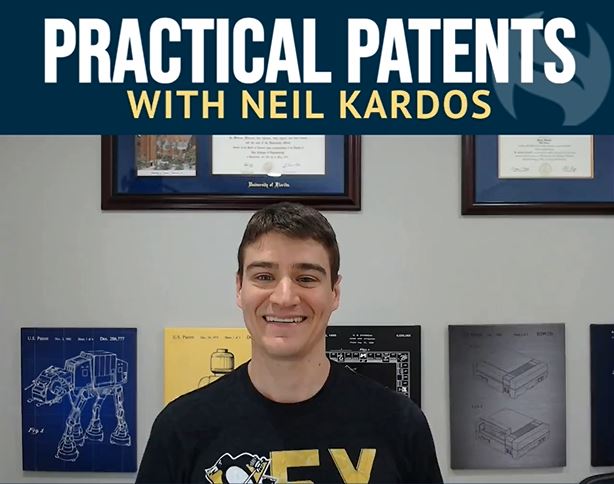Mastering the Art of Clarity in Patent Applications
The world of patent applications is intricate and demanding. Among the numerous challenges faced by inventors and patent practitioners, one that stands paramount is the art of drafting a clear and engaging patent specification. Neil Kardos offers profound insights into enhancing the readability of patent applications.
The heart of Neil’s advice lies in the organization of the patent specification. The traditional approach of hopping between figures can be disorienting, leading to confusion. Neil advocates for a more linear, structured approach. This entails starting with an introductory paragraph for each figure, detailing its contents thoroughly, and concluding with a summary. Such an approach doesn’t just enhance readability; it builds a narrative, making the invention’s journey through its various stages more comprehensible and compelling.
Neil delves into two scenarios frequently encountered in patent drafting:
- Sequential Storytelling with Figures: Often, a series of figures (e.g., Figs. 1a to 1c) is used to unfold the invention step-by-step. Neil suggests employing a single introductory and concluding paragraph for the entire series. This technique ensures a seamless narrative flow, making the progression of the invention easier to follow and understand.
- Balancing Overview and Detail: When one figure presents an overarching view (e.g., Fig. 1) and another dives into granular details (e.g., Fig. 2), Neil recommends a delicate balancing act. Mention Fig. 2 while discussing Fig. 1, but save the in-depth discussion for later. This approach keeps the reader anchored in the broader context before delving into specifics, thereby maintaining engagement and understanding.
Neil’s methodology extends beyond mere structural organization. It embraces the art of storytelling within the technical confines of patent law. By treating each figure not just as a visual representation but as a chapter in the story of the invention, the drafter can create a more immersive and understandable narrative. This approach resonates with examiners and potential licensees, making the invention not just a list of technical features but a compelling innovation journey.
In the realm of patents, clarity is not just about compliance; it’s about captivating the reader, be it an examiner, a judge, or a potential investor. By adopting these strategies, patent practitioners can transform their applications from mere technical documents to engaging narratives that effectively communicate the essence of their inventions.
Don’t forget to come back for more tips in the next installment of the Practical Patents Series. Until next time, happy patenting!
Note: This blog post is based on the opinions and observations of the author and should not be considered legal advice. Consult a qualified patent attorney for specific guidance on patent application drafting.
Want more tips? Check out other Practical Patents videos with Neil Kardos here!

